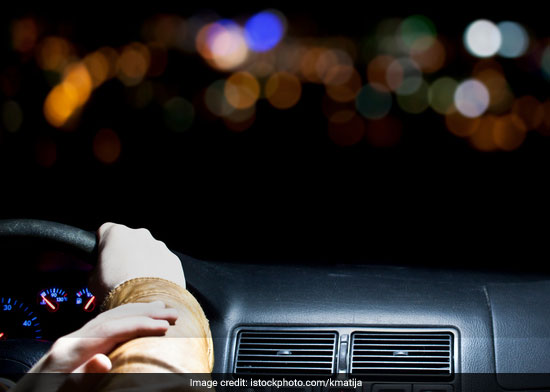
Turning A Blind Eye: Poor Vision Maybe Resulting In More Accidents On India’s Roads
Highlights
- No provision for mandatory vision test for private driving license
- Internationally, visual tests are compulsory for driving licenses
- Self-declaration of visual fitness for driving license is rarely followed
New Delhi: Reports of accidents in Indian roads are common across newspapers and television channels and reasons ranging from infrastructural defects in roads to pedestrian carelessness are cited. Between 1.5 to 2 lakh people die annually in road accidents in India and lack of road safety awareness is the most commonly cited reason for such high percentage of casualties on India’ roads. But an additional factor that remains unaddressed about road accidents in India is how the lack of a comprehensive vision test for drivers makes India’s roads more unsafe.
Driver culpability is a key cause for road accidents across many countries in the world, including China which has an annual death toll of 2.5 lakh per year. Vision tests have been made integral part of granting driving licenses in countries like UK, United States and Australia, to ensure that those with poor vision are not granted drivers’ licenses. India is yet to come up with any stringent law related to vision when it comes to granting of private driving licenses. Internationally, vision tests are an important part of granting driving licenses, which are granted post clearing the tests. But vision tests are not mandatory in India, and even the mandatory tests for commercial licenses are often compromised.
When it comes to granting private licenses, vision issues are not considered at all. Internationally, vision clarity is a major component of granting driving licenses and those with partial blindness, colour blindness, low depth perception are considered unfit for driving. Unfortunately, such handicaps amount to nothing in India when it comes to granting private licenses, said Ashish Verma, Senior Researcher on Transport, Indian Institute of Science (IISc), Bengaluru.
In 2016, the IISc conducted a study on 387 drivers from Bengaluru to check how accurate their vision was. Of the number of drivers tested, 52 per cent failed in at least one vision parameter and 81 per cent of them admitted to being involved in an accident. In 2017, a similar test was conducted by the IISc on over 500 drivers from the states of Delhi, Haryana, Uttar Pradesh and Rajasthan. 67 per cent of the drivers had some visual disability and 86 per cent of them were involved in minor/major accidents.
The studies were conducted to establish the relationship between poor vision and driving accidents and were successful in doing so. Poor vision, be it colour blindness or lack of depth can cause accidents, especially if vehicles are being driven at high speed, says Mr Verma.
There is a lot to learn from international laws on vision and granting of driving licenses, and how several countries are adhering to them.
Visual clarity below 6/12 is grounds for rejection of driving license in US, UK and Australia, whereas clarity of 6/18 is good enough for a license in India. Further, India does not have any fixed requirements on vision issues such as colour blindness, depth perception, contrast sensitivity and glare recovery. These vision components are used internationally to determine if a person is fit to drive a vehicle or not, though India is yet to implement their test mandatorily.
Obtaining private driving license in India is easy as one can enroll in a driving school and get a license within four weeks. Most of these driving schools operate on the basis of number of licenses obtained by their students and do not check if a person is visually fit to drive a vehicle. Hence many people get vehicle licenses even if they are not visually 100% fit to drive, said Nupur Srivastav, Research Fellow, Central Road Research Institute (CRRI).
The Motor Vehicles Act requires an applicant to self-certify his/her visual fitness when applying for a private license, a norm that is rarely implemented. The 2016 IISc study report was submitted to the Ministry of Road Transport and the study recommended that those with visual defects be given restricted driving license, similar to European countries like Sweden and Spain. A restricted license allows people to drive for a limited distance, such as from office to work, and for medical appointments. CRRI estimates that the provision of a restricted license can help those with visual defects, and is a much better option than providing driving license to anyone, irrespective of his/her visual condition.
Also Read: To Curb Road Accidents, Uttarakhand Launches Multiple Road Safety Initiatives


















